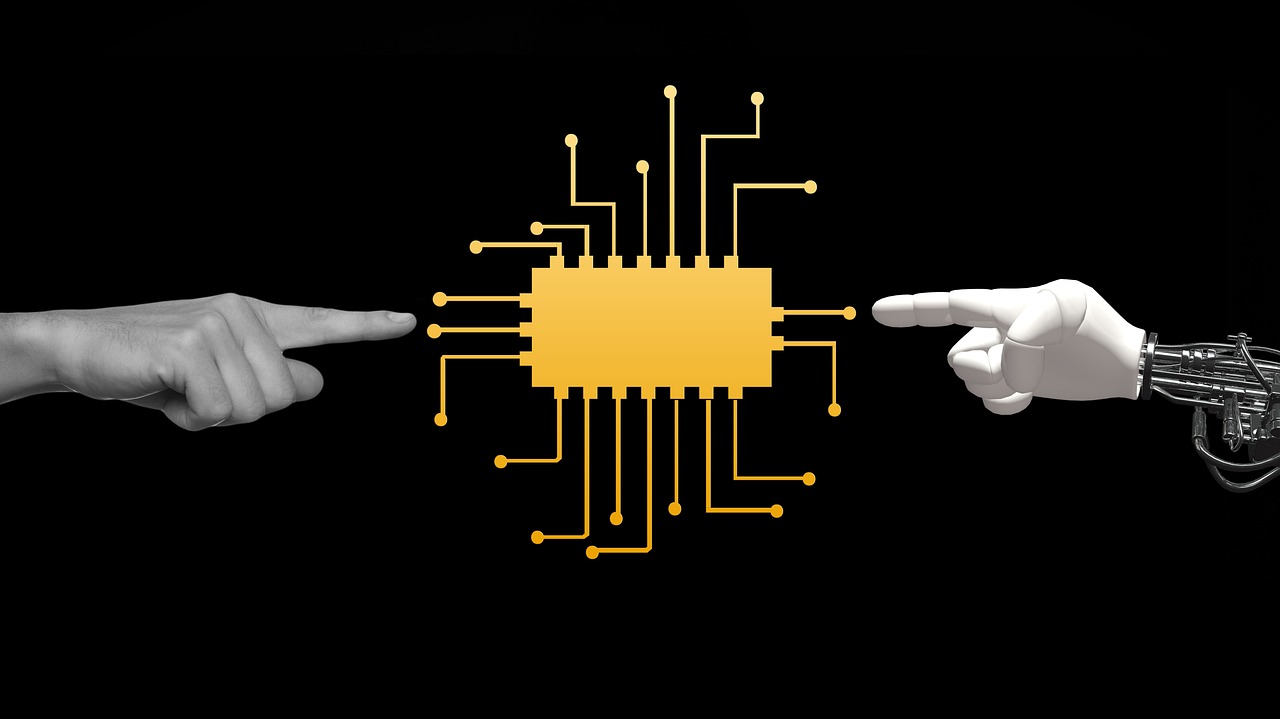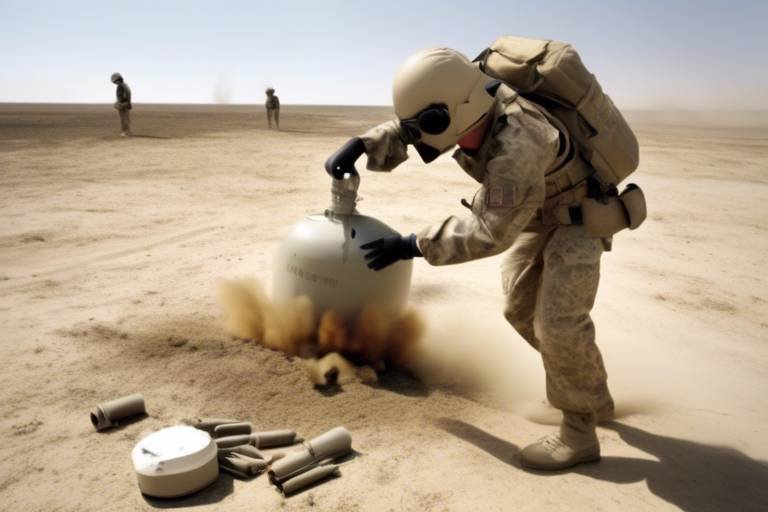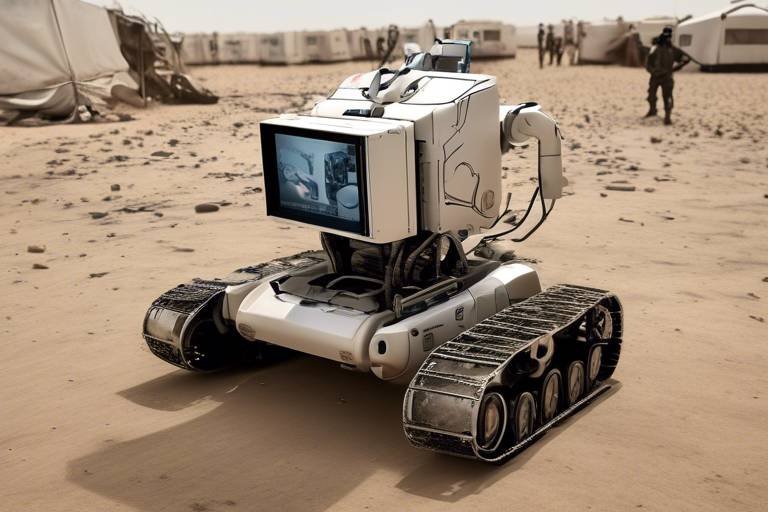The Use of the SUGV in Explosive Ordnance Disposal
The landscape of modern warfare and emergency response has transformed dramatically, and at the forefront of this evolution is the Small Unmanned Ground Vehicle (SUGV). These remarkable machines are not just a technological marvel; they are a lifeline for explosive ordnance disposal (EOD) teams operating in hazardous environments. Imagine a scenario where a bomb is lurking in a crowded area—this is where the SUGV steps in, equipped with advanced features that allow for safe and efficient operations. In this article, we will delve into the role of SUGVs in EOD, exploring their technological underpinnings, the myriad benefits they offer, and their diverse applications across various environments.
At the heart of the SUGV's effectiveness is its cutting-edge technology, designed specifically for the challenges posed by explosive ordnance. These vehicles are compact, highly mobile, and equipped with a suite of sensors and cameras that provide operators with a comprehensive view of the situation. The design of the SUGV allows it to navigate through tight spaces and rough terrains, making it suitable for both urban and rural settings. With capabilities that include remote operation, real-time data transmission, and advanced imaging systems, the SUGV is a game-changer in the field of EOD.
The advantages of using SUGVs in EOD operations are manifold. First and foremost, they significantly enhance the safety of personnel involved in potentially life-threatening situations. By deploying an SUGV, EOD teams can maintain a safe distance from explosive devices, thereby reducing the risk of injury or loss of life. Additionally, SUGVs improve operational efficiency, allowing teams to assess and neutralize threats more swiftly than traditional methods. This leads to quicker resolutions of dangerous situations, which is crucial in both military and civilian contexts.
One of the standout features of the SUGV is its ability to minimize risks to EOD personnel. By allowing remote operation, these vehicles enable operators to manage missions from a safe distance. This is particularly vital in high-stakes environments where even a moment's exposure could lead to catastrophic consequences. The SUGV acts as a shield, taking on the dangerous task of approaching and neutralizing explosive devices.
Equipped with sophisticated remote control features, SUGVs empower operators to execute missions without putting themselves in harm's way. This capability is akin to having a robot do the dirty work while the human remains safe and sound. Operators can maneuver the SUGV using a console, providing them with a sense of control and security that is paramount in EOD operations.
In the world of explosive ordnance disposal, information is power. The SUGV's ability to transmit real-time data back to the operator is invaluable. Imagine being in a situation where every second counts—having access to live feeds and critical information allows operators to make informed decisions rapidly. This feature not only enhances situational awareness but also significantly improves the chances of a successful operation.
Time is of the essence when dealing with explosive threats, and SUGVs excel in streamlining EOD processes. By reducing the time needed to assess and neutralize threats, these vehicles enable teams to focus on what matters most: ensuring safety and security. The efficiency with which SUGVs operate means that they can handle multiple tasks in a shorter timeframe, a crucial factor in both military and civilian applications.
SUGVs are not limited to military use; their versatility extends to civilian applications as well. From combat zones to disaster-stricken areas, these vehicles are making a significant impact. In military operations, SUGVs are deployed to safely address explosive hazards in combat zones, significantly reducing risks to soldiers. In civilian settings, they play a crucial role in humanitarian efforts, assisting in the safe removal of unexploded ordnance during disaster response missions.
In the chaotic and often unpredictable nature of military operations, SUGVs provide an essential layer of safety and efficiency. They are deployed in conflict areas to detect and neutralize explosive devices, ensuring the safety of troops and civilians alike. The ability to operate these vehicles remotely allows for strategic planning and execution, minimizing risks while maximizing effectiveness.
Beyond the battlefield, SUGVs are proving their worth in civilian applications. In the aftermath of natural disasters, these vehicles assist in locating and safely removing unexploded ordnance, preventing further casualties. Their deployment in humanitarian missions underscores their versatility and effectiveness in promoting safety in various contexts.
- What is a Small Unmanned Ground Vehicle (SUGV)?
A SUGV is a robotic vehicle designed for remote operation, primarily used in explosive ordnance disposal to enhance safety and efficiency. - How does the SUGV enhance safety for EOD personnel?
By allowing remote operation, SUGVs minimize the exposure of personnel to potentially explosive devices. - In what environments can SUGVs be deployed?
SUGVs can be used in military operations, civilian settings, and humanitarian efforts, making them versatile tools for handling explosive threats. - What are the key features of SUGVs?
Key features include remote operation capabilities, real-time data transmission, and advanced imaging systems.

Overview of SUGV Technology
This article explores the role of the Small Unmanned Ground Vehicle (SUGV) in explosive ordnance disposal (EOD), discussing its features, advantages, and applications in enhancing safety and efficiency in hazardous environments.
The Small Unmanned Ground Vehicle (SUGV) represents a remarkable leap in technology, specifically designed to tackle the challenges associated with explosive ordnance disposal. These compact robots are equipped with advanced features that allow them to operate in a variety of environments, making them invaluable assets in both military and civilian contexts. At the heart of SUGV technology are several key components that enhance their functionality and effectiveness.
One of the standout features of SUGVs is their mobility. Designed to traverse rugged terrains, these vehicles can navigate through debris, rough ground, and even tight spaces that are often found in disaster zones or combat areas. This is largely due to their articulated tracks and omni-directional wheels, which provide exceptional maneuverability. Imagine trying to navigate a maze filled with potential hazards; SUGVs are like agile dancers, gracefully moving through the chaos.
Another critical aspect of SUGV technology is their sensors. Equipped with a variety of sensors, including cameras, thermal imaging, and gas detectors, SUGVs can gather crucial data in real-time. This capability allows operators to assess the situation from a safe distance, reducing the risk of exposure to dangerous environments. The integration of these sensors not only enhances situational awareness but also supports decision-making processes during EOD missions.
Moreover, the communication systems within SUGVs are designed for robust and reliable data transmission. This ensures that operators can maintain control and receive immediate feedback from the field. The use of advanced wireless technology allows for real-time updates, meaning that the operator can adjust strategies on the fly, much like a quarterback making split-second decisions on the football field.
In terms of design, SUGVs are typically lightweight yet durable, constructed from materials that can withstand harsh conditions. This durability is essential, as EOD missions often take place in unpredictable environments, ranging from urban landscapes to remote wilderness areas. The design philosophy behind SUGVs is not just about functionality; it's also about ensuring that these vehicles can endure the rigors of their missions.
To summarize, the SUGV technology is a blend of mobility, sensory capabilities, and robust communication systems that together create a powerful tool for explosive ordnance disposal. These vehicles not only enhance operational efficiency but also significantly improve the safety of personnel involved in EOD missions. As we delve deeper into the benefits and applications of SUGVs, it's clear that they are revolutionizing the way we approach explosive threats.
Exploring the advantages of utilizing SUGVs in explosive ordnance disposal, including increased safety for personnel, improved efficiency in operations, and enhanced situational awareness during missions.
Detailing how SUGVs minimize risk to EOD personnel by allowing remote operation and reducing exposure to potentially explosive devices during disposal operations.
Examining the remote control features of SUGVs, which enable operators to manage missions from a safe distance, thus protecting lives during hazardous situations.
Discussing the importance of real-time data transmission in EOD missions, allowing operators to receive critical information and make informed decisions quickly.
Analyzing how SUGVs streamline EOD processes, reducing the time needed to assess and neutralize explosive threats while maintaining high levels of effectiveness.
Highlighting the diverse scenarios where SUGVs are deployed, from military operations to civilian applications, showcasing their versatility in handling explosive threats.
Investigating the role of SUGVs in military contexts, focusing on their use in combat zones and conflict areas to safely address explosive hazards.
Exploring the application of SUGVs in civilian settings, including disaster response and humanitarian missions, where they assist in the safe removal of unexploded ordnance.
- What is a SUGV? A Small Unmanned Ground Vehicle (SUGV) is a robotic vehicle designed for remote operation in hazardous environments, particularly for explosive ordnance disposal.
- How do SUGVs enhance safety during EOD operations? SUGVs allow operators to manage missions from a safe distance, minimizing exposure to dangerous explosives.
- Can SUGVs operate in various terrains? Yes, SUGVs are designed to traverse rugged and challenging terrains, making them versatile for different operational environments.
- What types of sensors do SUGVs use? SUGVs are equipped with cameras, thermal imaging, and gas detectors to gather crucial data for EOD missions.

Benefits of SUGV in EOD
When it comes to explosive ordnance disposal (EOD), the integration of technology can be a game changer, and the Small Unmanned Ground Vehicle (SUGV) is at the forefront of this revolution. One of the most significant benefits of utilizing SUGVs in EOD operations is the enhanced safety they provide for personnel. Imagine being able to neutralize a potentially explosive device without putting yourself in harm's way; that’s the reality SUGVs offer. By allowing remote operation, these vehicles drastically reduce the risk of injury or fatality for EOD teams. Instead of physically approaching a suspicious object, operators can control the SUGV from a safe distance, all while maintaining full situational awareness.
Moreover, the operational efficiency of SUGVs is another compelling advantage. In the high-stakes world of EOD, time is of the essence. The faster a threat can be assessed and neutralized, the safer the environment becomes for both civilians and military personnel. SUGVs streamline the entire EOD process, allowing for quicker evaluations of explosive threats. This efficiency is not just about speed; it’s also about effectiveness. With advanced sensors and tools, SUGVs can gather crucial data and relay it back to operators in real-time, facilitating informed decision-making.
To illustrate this point further, consider the following key benefits of SUGVs in EOD:
- Increased Safety: Remote operation minimizes the exposure of personnel to explosive threats.
- Improved Efficiency: Rapid assessment and neutralization processes save time and resources.
- Enhanced Situational Awareness: Real-time data transmission provides operators with critical information during missions.
Another aspect worth mentioning is the real-time data transmission capabilities of SUGVs. This feature is crucial in EOD missions, as it allows operators to receive vital information instantaneously. Imagine trying to defuse a bomb with only partial knowledge of its components; it would be like trying to solve a puzzle with missing pieces. Real-time data ensures that operators are well-informed, enabling them to make quick and effective decisions. This capability not only enhances the safety of the operation but also increases the likelihood of a successful outcome.
In summary, the benefits of SUGVs in explosive ordnance disposal are clear. They provide a unique blend of safety, efficiency, and real-time situational awareness, making them an invaluable asset in both military and civilian applications. As technology continues to advance, the role of SUGVs is likely to expand, further revolutionizing the landscape of EOD operations.
- What is a SUGV? A Small Unmanned Ground Vehicle (SUGV) is a robotic platform used for various tasks, including explosive ordnance disposal.
- How does a SUGV enhance safety in EOD operations? SUGVs allow remote operation, minimizing personnel exposure to hazardous situations.
- What are the key features of SUGVs? Key features include remote control capabilities, real-time data transmission, and advanced sensors for threat assessment.
- Can SUGVs be used in civilian applications? Yes, SUGVs are also utilized in civilian settings for disaster response and humanitarian efforts.

Enhanced Safety Measures
When it comes to explosive ordnance disposal (EOD), safety is not just a priority; it’s the lifeline that ensures personnel return home unscathed. The advent of Small Unmanned Ground Vehicles (SUGVs) has revolutionized the way we approach these dangerous tasks. Imagine a scenario where an EOD technician can neutralize a bomb from a safe distance, all while sipping coffee in a command center. Sounds like science fiction, right? But with SUGVs, this is becoming a reality. These robotic marvels minimize human risk by allowing remote operation, thereby reducing exposure to potentially explosive devices.
One of the standout features of SUGVs is their remote operation capabilities. Operators can control these vehicles from hundreds of meters away, using sophisticated control systems that provide a real-time view of the environment. This means that when a threat is identified, the operator can deploy the SUGV to assess and neutralize it without stepping foot in harm's way. Think of it like sending in a drone for reconnaissance, but instead, it’s a ground vehicle that can handle much tougher tasks.
Moreover, the real-time data transmission offered by SUGVs is crucial during EOD missions. Operators receive live feeds from high-definition cameras and various sensors mounted on the vehicle. This real-time information allows them to make informed decisions quickly. For instance, if a technician spots an unusual object during a mission, they can analyze its characteristics immediately and determine the best course of action without delay. This capability is akin to having a virtual assistant that not only alerts you to potential issues but also provides you with the data needed to tackle them effectively.
To summarize, the integration of SUGVs into EOD operations enhances safety measures significantly. Here’s a quick look at how these vehicles contribute to safer missions:
- Remote Operation: Operators can control SUGVs from a safe distance.
- Real-time Data: Immediate feedback on the situation allows for quick decision-making.
- Minimized Exposure: Reduces the need for personnel to be near potentially explosive devices.
In a world where every second counts, the ability to operate remotely and receive real-time data can mean the difference between life and death. SUGVs not only protect EOD personnel but also enhance the overall effectiveness of operations, making them an invaluable asset in the fight against explosive threats.
- What is a Small Unmanned Ground Vehicle (SUGV)?
A SUGV is a robotic vehicle designed for remote operation, primarily used in explosive ordnance disposal to enhance safety and efficiency. - How do SUGVs improve safety in EOD missions?
SUGVs allow operators to assess and neutralize explosive threats from a safe distance, minimizing the risk of injury or death. - Can SUGVs be used in civilian applications?
Yes, SUGVs are also deployed in civilian settings, including disaster response and humanitarian missions, to safely handle unexploded ordnance.

Remote Operation Capabilities
This article explores the role of the Small Unmanned Ground Vehicle (SUGV) in explosive ordnance disposal (EOD), discussing its features, advantages, and applications in enhancing safety and efficiency in hazardous environments.
Understanding the technological advancements that define the SUGV, including its design, capabilities, and operational features that make it suitable for EOD missions in various environments.
Exploring the advantages of utilizing SUGVs in explosive ordnance disposal, including increased safety for personnel, improved efficiency in operations, and enhanced situational awareness during missions.
Detailing how SUGVs minimize risk to EOD personnel by allowing remote operation and reducing exposure to potentially explosive devices during disposal operations.
The of SUGVs represent a groundbreaking leap in safety and efficiency for explosive ordnance disposal missions. Imagine being able to control a robot from a safe distance, like playing a video game, but with real-world stakes. This feature is not just a luxury; it’s a necessity in hazardous environments where every second counts and every decision could mean the difference between life and death.
Equipped with sophisticated control systems, SUGVs allow operators to manage their missions from a distance, typically several hundred meters away. This distance is crucial because it significantly reduces the risk of exposure to potential threats. The remote operation is facilitated through a combination of wireless communication and advanced sensors that relay real-time data back to the operator. This means that even in the most dangerous situations, the EOD personnel can remain out of harm's way while still effectively managing the operation.
Moreover, the intuitive user interface of these systems is designed to be user-friendly, enabling operators to quickly learn how to navigate the vehicle and respond to dynamic situations. The controls often mimic those of popular gaming consoles, making it easier for new operators to adapt. This accessibility ensures that even personnel with minimal experience can effectively engage with the SUGV, enhancing overall mission success rates.
In addition to basic control, many SUGVs come equipped with features such as:
- Camera Systems: High-definition cameras provide a clear view of the operation area, allowing operators to assess threats visually.
- Articulating Arms: These allow for precise manipulation of objects, making it easier to handle explosives without direct contact.
- Obstacle Detection: Advanced sensors help the SUGV navigate complex terrains, avoiding obstacles autonomously.
These capabilities combined create a robust platform that not only enhances safety but also improves the overall efficiency of EOD operations. By minimizing the need for personnel to enter dangerous zones, SUGVs can expedite the process of identifying and neutralizing threats, which is crucial in time-sensitive situations.
Analyzing how SUGVs streamline EOD processes, reducing the time needed to assess and neutralize explosive threats while maintaining high levels of effectiveness.
Highlighting the diverse scenarios where SUGVs are deployed, from military operations to civilian applications, showcasing their versatility in handling explosive threats.
Investigating the role of SUGVs in military contexts, focusing on their use in combat zones and conflict areas to safely address explosive hazards.
Exploring the application of SUGVs in civilian settings, including disaster response and humanitarian missions, where they assist in the safe removal of unexploded ordnance.
- What is a Small Unmanned Ground Vehicle (SUGV)? A SUGV is a robotic vehicle designed to assist in tasks such as explosive ordnance disposal, providing remote operation capabilities to enhance safety and efficiency.
- How do SUGVs improve safety for EOD personnel? By allowing operators to control the vehicle from a safe distance, SUGVs minimize the risk of exposure to explosive devices.
- What types of environments can SUGVs operate in? SUGVs are versatile and can be deployed in various environments, including military combat zones and civilian disaster areas.

Real-time Data Transmission
This article explores the role of the Small Unmanned Ground Vehicle (SUGV) in explosive ordnance disposal (EOD), discussing its features, advantages, and applications in enhancing safety and efficiency in hazardous environments.
Understanding the technological advancements that define the SUGV, including its design, capabilities, and operational features that make it suitable for EOD missions in various environments.
Exploring the advantages of utilizing SUGVs in explosive ordnance disposal, including increased safety for personnel, improved efficiency in operations, and enhanced situational awareness during missions.
Detailing how SUGVs minimize risk to EOD personnel by allowing remote operation and reducing exposure to potentially explosive devices during disposal operations.
Examining the remote control features of SUGVs, which enable operators to manage missions from a safe distance, thus protecting lives during hazardous situations.
In the high-stakes world of explosive ordnance disposal, is nothing short of a game-changer. Imagine being in a tense situation where every second counts; having immediate access to critical information can make all the difference. SUGVs are equipped with advanced communication systems that allow operators to receive live updates from the field, enabling them to make swift, informed decisions. This capability is not just a luxury; it’s a necessity when dealing with explosive threats.
One of the standout features of real-time data transmission is its ability to provide live video feeds and sensor data back to the operators. This means that while the SUGV is maneuvering in a potentially dangerous area, the team can visually assess the situation without putting themselves in harm's way. The data transmitted can include:
- Video Surveillance: High-definition cameras provide a clear view of the environment.
- Environmental Sensors: Detect chemical signatures or radiation levels.
- Telemetry Data: Offers insights into the vehicle’s status and performance.
Such capabilities ensure that operators can maintain a comprehensive understanding of the situation, allowing them to adjust their strategies in real time. Moreover, this data can be recorded and analyzed later, contributing to ongoing training and improvement of EOD operations.
Additionally, the integration of GPS technology allows for precise location tracking, which is crucial when navigating complex terrains or urban environments. The ability to pinpoint the exact location of an explosive device enhances the overall effectiveness of the mission, ensuring that every action taken is deliberate and calculated.
In summary, real-time data transmission is a vital component of SUGV operations in explosive ordnance disposal. It not only enhances the safety of EOD personnel but also significantly improves the efficiency and effectiveness of their missions, making it an indispensable tool in the fight against explosive hazards.
Highlighting the diverse scenarios where SUGVs are deployed, from military operations to civilian applications, showcasing their versatility in handling explosive threats.
Investigating the role of SUGVs in military contexts, focusing on their use in combat zones and conflict areas to safely address explosive hazards.
Exploring the application of SUGVs in civilian settings, including disaster response and humanitarian missions, where they assist in the safe removal of unexploded ordnance.
- What is an SUGV?
An SUGV, or Small Unmanned Ground Vehicle, is a robotic platform designed to assist in various tasks, including explosive ordnance disposal, surveillance, and reconnaissance.
- How does real-time data transmission work in SUGVs?
SUGVs use advanced communication systems to send live data, including video feeds and sensor information, back to operators, allowing for informed decision-making during missions.
- What are the main benefits of using SUGVs in EOD?
The primary benefits include increased safety for personnel, improved operational efficiency, and enhanced situational awareness during missions.

Operational Efficiency
When we talk about in the realm of explosive ordnance disposal (EOD), the role of Small Unmanned Ground Vehicles (SUGVs) becomes incredibly significant. Imagine being able to assess a dangerous situation without putting yourself in harm's way. That's precisely what SUGVs bring to the table. These remarkable machines are designed to streamline EOD processes, effectively reducing the time required to evaluate and neutralize explosive threats.
One of the key features that contribute to the operational efficiency of SUGVs is their ability to perform tasks that would typically require multiple personnel. Instead of sending a team into a potentially dangerous area, a single operator can control the SUGV remotely, conducting thorough assessments and executing disposal operations from a safe distance. This not only minimizes the risk to human life but also allows for a more focused and organized approach to managing explosive threats.
Furthermore, SUGVs come equipped with advanced sensors and imaging technology, enabling them to gather critical data quickly and accurately. For instance, they can be fitted with thermal imaging cameras and high-definition video systems that provide real-time visuals of the area. This capability allows operators to make informed decisions on the spot, significantly enhancing the speed and effectiveness of the EOD response. The ability to transmit data in real-time means that teams can assess the situation without delay, leading to quicker resolutions and a reduction in potential collateral damage.
In addition to their impressive technological capabilities, SUGVs also contribute to operational efficiency through their versatility. They can be deployed in a variety of environments, from urban settings to rugged terrains, adapting to the specific challenges presented by each scenario. This adaptability is crucial in EOD missions where every second counts, and the environment can significantly impact the success of the operation.
To illustrate the efficiency of SUGVs in EOD operations, let's take a look at a comparison of traditional methods versus SUGV-assisted methods:
| Aspect | Traditional Methods | SUGV-Assisted Methods |
|---|---|---|
| Personnel Required | Multiple personnel | Single operator |
| Time to Assess | Longer due to manual checks | Rapid assessment with real-time data |
| Risk to Personnel | High | Minimal |
| Data Accuracy | Subject to human error | High accuracy with advanced sensors |
| Operational Flexibility | Limited to specific environments | Highly adaptable to various terrains |
As we can see from the table, SUGVs drastically improve the efficiency of EOD operations, allowing for quicker responses while keeping personnel safe. The combination of remote operation, real-time data transmission, and advanced technological features makes SUGVs an invaluable asset in the fight against explosive threats.
- What is a Small Unmanned Ground Vehicle (SUGV)?
A SUGV is a type of robotic vehicle designed for various tasks, including explosive ordnance disposal, allowing for remote operation in hazardous environments. - How do SUGVs enhance safety during EOD operations?
SUGVs minimize the risk to EOD personnel by allowing them to operate from a safe distance, reducing exposure to potentially explosive devices. - Can SUGVs be used in different environments?
Yes, SUGVs are versatile and can be deployed in a variety of settings, including military operations and civilian disaster response scenarios. - What types of sensors do SUGVs use?
SUGVs can be equipped with thermal imaging cameras, high-definition video systems, and other advanced sensors to gather critical data during missions. - How does real-time data transmission benefit EOD missions?
Real-time data transmission allows operators to receive immediate information about the situation, enabling quicker and more informed decision-making.

Applications of SUGV in Various Environments
The Small Unmanned Ground Vehicle (SUGV) has rapidly become a vital tool in various environments, showcasing its versatility and adaptability in handling explosive threats. From military operations to civilian applications, SUGVs are designed to tackle hazardous situations that demand precision, safety, and efficiency. Imagine a world where human lives are safeguarded while tackling the dangers posed by unexploded ordnance—this is the reality that SUGVs help create.
In the military realm, SUGVs are deployed in combat zones, where the risk of encountering explosive devices is significantly high. These robotic systems can navigate through treacherous terrains and gather intelligence on potential threats without putting soldiers in harm's way. They are equipped with advanced sensors and cameras that provide real-time feedback, allowing operators to assess situations before making critical decisions. This capability not only enhances operational effectiveness but also minimizes the risk of casualties.
On the civilian front, SUGVs play a crucial role in disaster response and humanitarian efforts. In the aftermath of natural disasters, unexploded ordnance can pose severe threats to communities. Here, SUGVs come to the rescue, assisting in the safe removal of these dangerous remnants. Their ability to operate in challenging environments—be it rubble-strewn landscapes or contaminated zones—makes them indispensable. For instance, during humanitarian missions, SUGVs can help clear paths for aid deliveries, ensuring that relief reaches those in need without delay.
Consider the following scenarios where SUGVs have made a significant impact:
- Military Operations: During conflicts, SUGVs are used to locate and neutralize improvised explosive devices (IEDs) without endangering soldiers.
- Civilian Applications: In urban areas, SUGVs assist bomb disposal squads in safely handling suspicious packages or devices, ensuring public safety.
- Humanitarian Missions: After natural disasters, SUGVs help in identifying and disposing of unexploded ordnance, making areas safe for rebuilding efforts.
The future of SUGV applications seems promising, with ongoing advancements in technology enhancing their capabilities. As these vehicles become more autonomous and intelligent, their potential to revolutionize explosive ordnance disposal will only grow. In environments where traditional methods may falter, SUGVs stand as a beacon of hope, ensuring that safety and efficiency go hand in hand.
- What is a Small Unmanned Ground Vehicle (SUGV)?
A SUGV is a robotic vehicle designed for remote operation, primarily used in explosive ordnance disposal and other hazardous environments. - How does a SUGV enhance safety for EOD personnel?
By allowing remote operation, SUGVs minimize the risk of exposing personnel to potentially explosive devices during disposal operations. - In what environments are SUGVs used?
SUGVs are utilized in military operations, civilian applications, and humanitarian efforts, showcasing their versatility across various scenarios. - What are the operational advantages of using SUGVs?
They improve operational efficiency, reduce response times, and enhance situational awareness during missions.

Military Operations
In the realm of , the Small Unmanned Ground Vehicle (SUGV) has emerged as a game-changer. Imagine being in a combat zone where every step could lead to an explosive surprise. This is where SUGVs come into play, acting as the eyes and hands of EOD teams, allowing them to tackle explosive threats without putting lives at risk. These remarkable machines are equipped with advanced sensors and cameras, enabling operators to gather crucial intelligence from a safe distance. This capability is not just a luxury; it’s a necessity in today’s unpredictable battlefield.
One of the most significant advantages of deploying SUGVs in military operations is their versatility. They can navigate various terrains, whether it’s rugged mountains, urban landscapes, or sandy deserts, making them suitable for a wide array of missions. For instance, during operations in conflict zones, SUGVs can be used to:
- Conduct reconnaissance missions
- Identify and neutralize explosive devices
- Support search and rescue operations
Furthermore, the ability to operate these vehicles remotely means that soldiers can maintain a safe distance from potential threats. This remote operation capability is facilitated through sophisticated control systems that allow operators to maneuver the SUGV while simultaneously receiving real-time feedback from its onboard cameras and sensors. This level of situational awareness is critical in military engagements, where every second counts, and decisions must be made swiftly.
Moreover, the integration of SUGVs into military strategies enhances operational efficiency. Traditional EOD methods often involve time-consuming manual inspections and disarmament procedures, which can expose personnel to danger for extended periods. In contrast, SUGVs can quickly assess a situation, relay information back to the command center, and even perform neutralization tasks autonomously. This not only speeds up the process but also minimizes the risk to human life.
In terms of training, military personnel are increasingly being trained to operate these unmanned systems. This shift represents a significant evolution in military tactics, where technology and human expertise work hand in hand. As SUGVs become more advanced, their role in military operations will only expand. They are not just tools; they are vital assets that enhance the safety and effectiveness of our armed forces.
In summary, the deployment of SUGVs in military operations represents a revolutionary approach to handling explosive ordnance disposal. Their ability to operate remotely, coupled with their versatility and efficiency, makes them indispensable in modern warfare. As we continue to embrace technological advancements, the future of military operations looks not only safer but also smarter.
- What is a Small Unmanned Ground Vehicle (SUGV)?
SUGVs are robotic vehicles designed for various applications, including explosive ordnance disposal, reconnaissance, and support in hazardous environments. - How do SUGVs enhance safety in military operations?
By allowing remote operation, SUGVs minimize the risk to personnel, enabling them to assess and neutralize threats without direct exposure to danger. - Can SUGVs operate in different terrains?
Yes, SUGVs are designed to navigate various environments, including urban areas, deserts, and mountainous regions. - What are the key features of SUGVs?
Key features include advanced sensors, real-time data transmission, remote operation capabilities, and the ability to perform tasks autonomously.

Civilian and Humanitarian Efforts
The role of Small Unmanned Ground Vehicles (SUGVs) in civilian and humanitarian efforts is nothing short of transformative. These versatile machines have become invaluable tools in situations where human lives are at stake, particularly in regions affected by conflict or natural disasters. Imagine a scenario where unexploded ordnance (UXO) lies hidden beneath debris after a catastrophe; sending human operatives into such a hazardous environment is risky. This is where SUGVs shine, acting as a protective barrier between danger and the men and women who bravely respond to crises.
SUGVs are equipped with advanced sensors and cameras, allowing them to navigate through challenging terrains and provide real-time data to operators, who can be stationed far from the perilous zone. This capability not only enhances the safety of EOD personnel but also accelerates the process of identifying and neutralizing threats. In humanitarian contexts, the presence of SUGVs can significantly reduce the time it takes to clear areas for safe habitation and reconstruction, ultimately saving lives and restoring communities.
Furthermore, the deployment of SUGVs in civilian settings can be categorized into several key areas:
- Disaster Response: After natural disasters, SUGVs can be deployed to search for and disarm any explosive remnants of war or other hazardous materials that may pose a threat to recovery efforts.
- Humanitarian Missions: In conflict zones, these vehicles assist NGOs in safely removing UXOs, ensuring that affected populations can return to their homes without fear of hidden dangers.
- Community Safety: SUGVs can be used in community outreach programs to educate locals about the risks of unexploded devices and demonstrate safe disposal methods.
The integration of SUGVs into humanitarian efforts not only enhances operational efficiency but also fosters a sense of security among communities recovering from trauma. As these vehicles undertake the dangerous task of identifying and neutralizing explosive threats, they allow humanitarian workers to focus on their primary mission: helping those in need. The potential for SUGVs to revolutionize the way we respond to crises is immense, and as technology continues to evolve, so too will their capabilities in serving humanity.
- What is a Small Unmanned Ground Vehicle (SUGV)?
A SUGV is a robotic vehicle designed for remote operation, primarily used in explosive ordnance disposal and other hazardous environments. - How do SUGVs enhance safety in humanitarian efforts?
SUGVs reduce human exposure to dangerous situations by allowing operators to control them from a safe distance, minimizing risks during explosive ordnance disposal. - Can SUGVs be used in disaster response?
Yes, SUGVs are effective in disaster response scenarios, helping to identify and neutralize unexploded ordnance in affected areas. - What are the advantages of using SUGVs in civilian settings?
They provide increased safety, efficiency in operations, and enhanced situational awareness, making them crucial for effective disaster and humanitarian responses.
Frequently Asked Questions
- What is a Small Unmanned Ground Vehicle (SUGV)?
A Small Unmanned Ground Vehicle (SUGV) is a robotic device designed to assist in various tasks, particularly in explosive ordnance disposal (EOD). These vehicles are equipped with advanced technology that allows them to navigate hazardous environments and perform critical missions while minimizing risk to human operators.
- How does a SUGV enhance safety during EOD missions?
SUGVs enhance safety by allowing operators to control them remotely, which means personnel can stay at a safe distance from potential explosive threats. This capability significantly reduces the risk of injury or fatality during dangerous operations, as the SUGV can assess and neutralize threats without putting human lives in jeopardy.
- What are the key features of SUGVs?
Key features of SUGVs include remote operation capabilities, real-time data transmission, and advanced sensors. These features enable operators to receive critical information quickly, navigate challenging terrains, and perform tasks such as reconnaissance and bomb disposal efficiently.
- In what environments are SUGVs typically used?
SUGVs are versatile and can be deployed in various environments, including military operations, disaster response scenarios, and humanitarian efforts. Their ability to operate in combat zones, urban areas, and remote locations makes them invaluable in addressing explosive hazards safely and effectively.
- Can SUGVs be used for civilian applications?
Absolutely! SUGVs play a crucial role in civilian applications, particularly in disaster response and humanitarian missions. They assist in safely locating and removing unexploded ordnance, helping to clear areas for safe habitation and recovery efforts.
- What are the benefits of using SUGVs in EOD operations?
The benefits of using SUGVs in EOD operations include increased safety for personnel, improved operational efficiency, and enhanced situational awareness. By utilizing these vehicles, organizations can respond to explosive threats more effectively and with greater safety for all involved.
- How do SUGVs communicate real-time data?
SUGVs are equipped with communication systems that allow them to transmit data back to operators in real-time. This capability is crucial during EOD missions, as it enables quick decision-making based on the latest information about the operational environment and any identified threats.



















